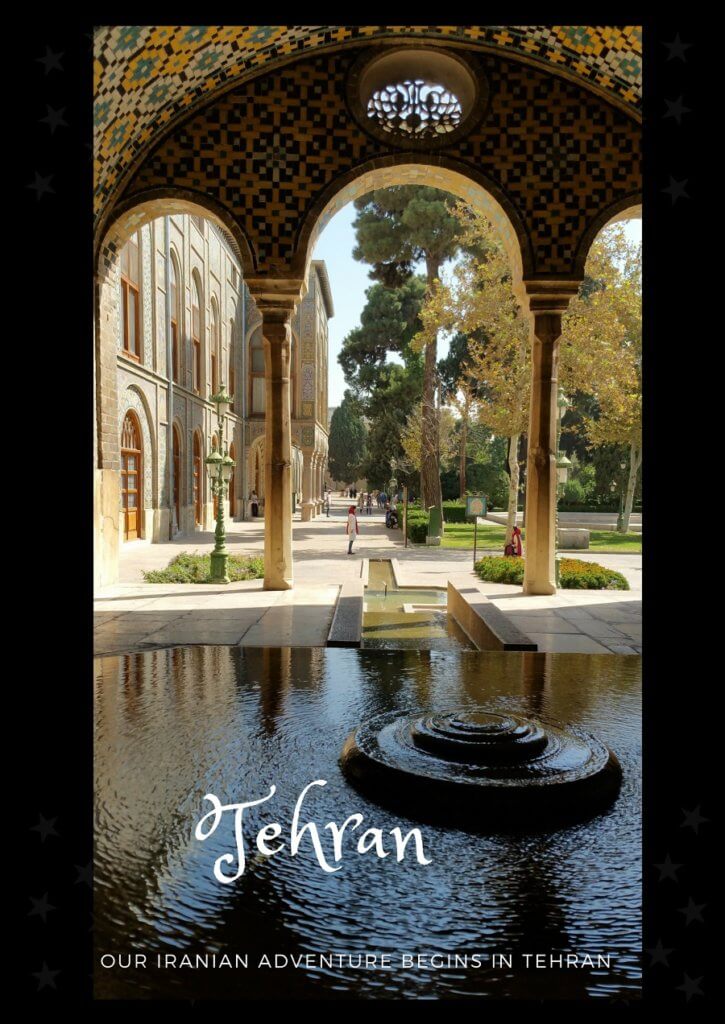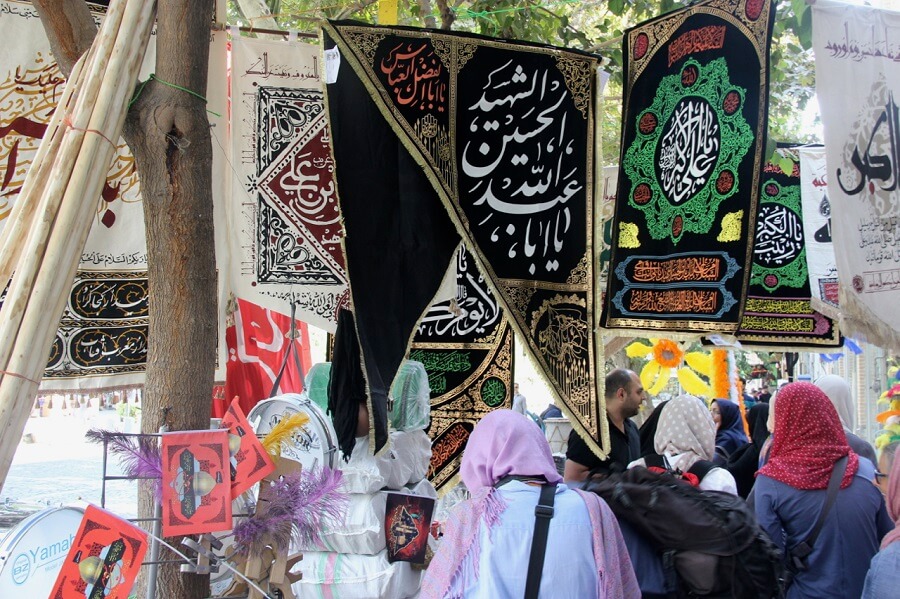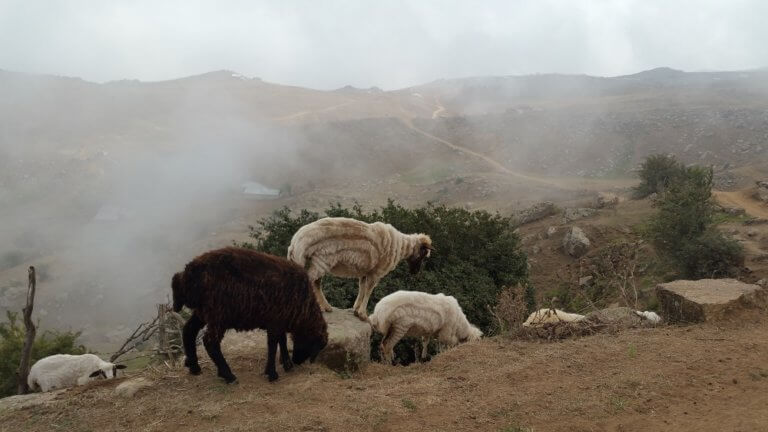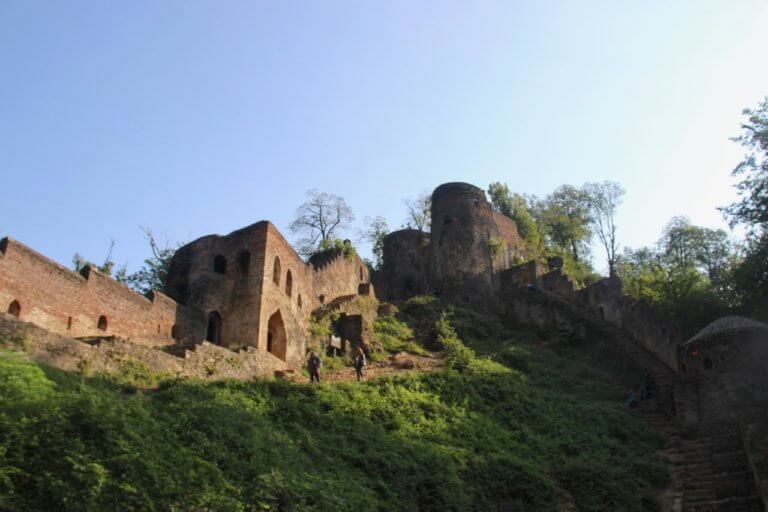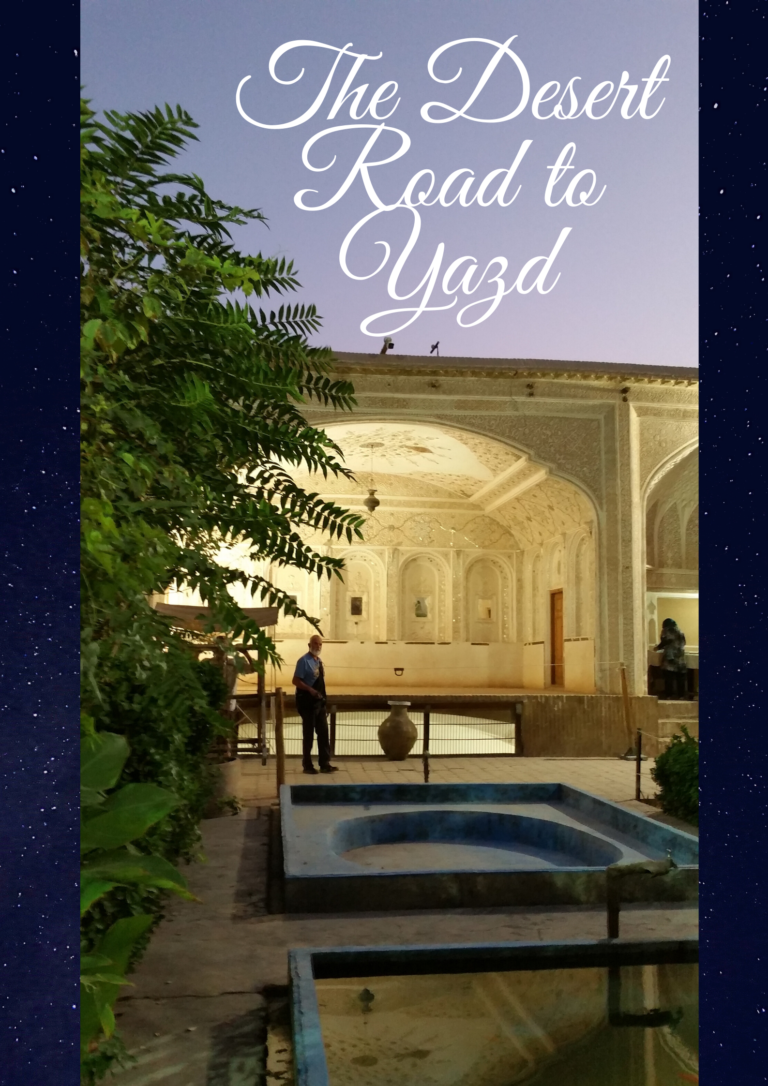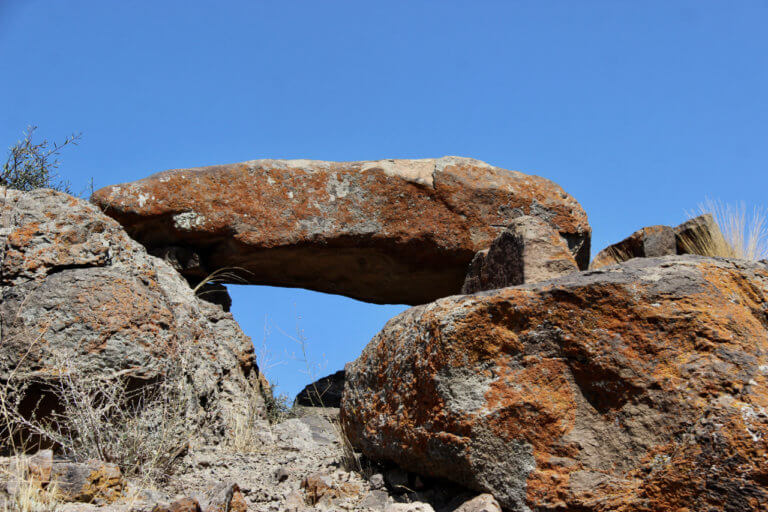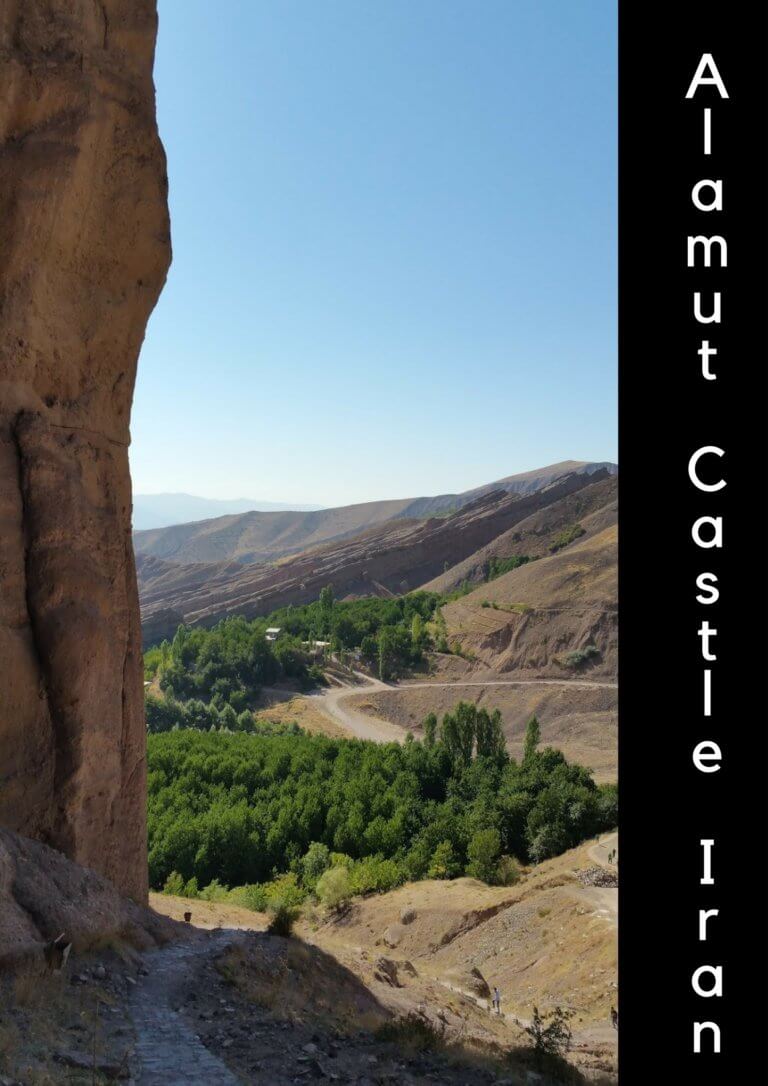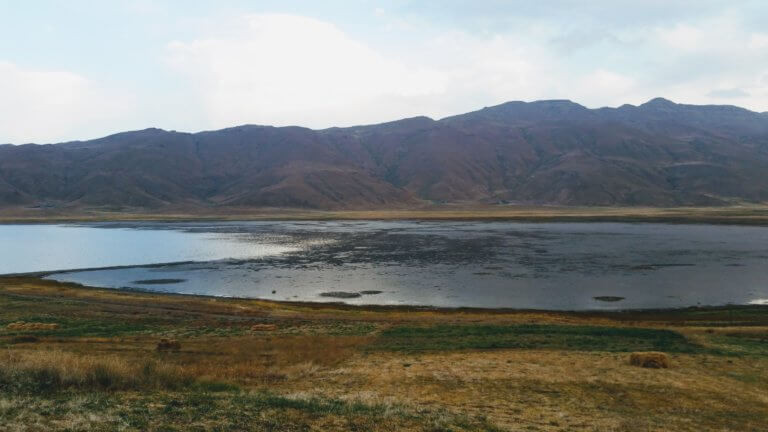Day 226 – 227 17 and 18th September
A very professional Turkish Airlines flight from Istanbul saw our arrival into Tehran with our heads filled with all the media-built assumptions about Iran and its people and accompanying trepidation because of it.
As we descended into Imam Khomeini Airport Hijab was still a legal requirement for women. From the first announcement of descent – headscarves were donned for all those not already covered. It was a quiet shock to realise that after all the talking about, reading about, and thinking about wearing a head scarf it was now a fact of public life at all times for the next month.
We had opted for pre-approved visa through our tour company rather than a full Visa on Arrival We lined up at immigration with our paper work, money, spare passport photos – after slowly moving up the queue to the desk we discovered we had missed the visa section and needed to go back. After a little aimless wandering we found the department, paid our fee and a short time we were again on our way through the Immigration queue. Although you can get a visa on arrival for a fee of 145 euros per person – in cash, it did seem much easier with the pre-approval and code.
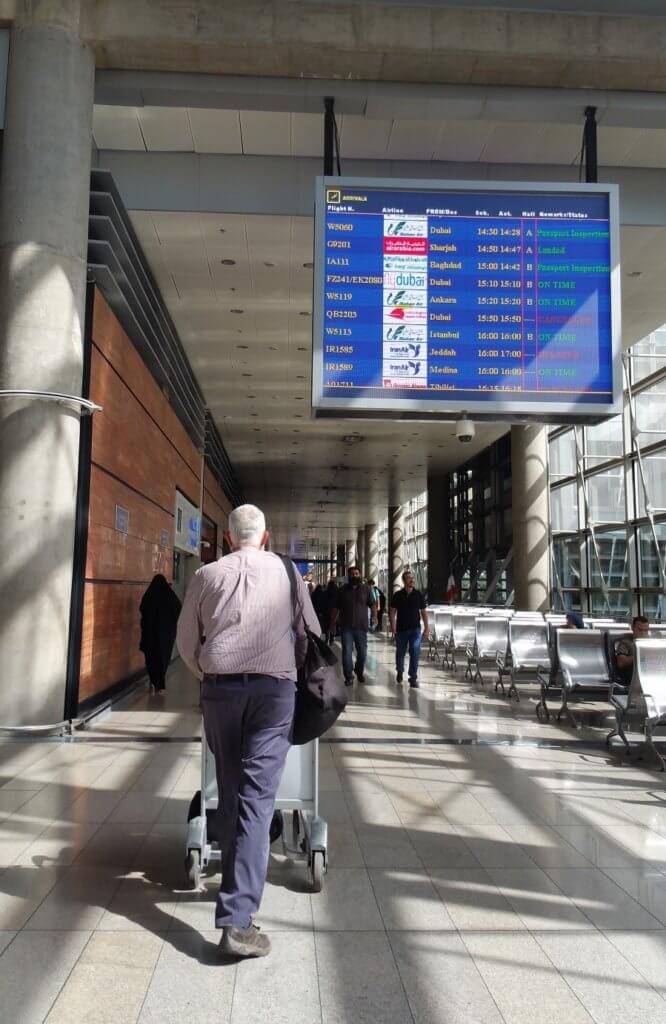
After immigration – which was the usual world wide perfunctory kind of processing – we met out first example of Iranian hospitality. It is hard to describe the extent of the friendliness and generosity we have found throughout our trip. Cliched but true – it was truly humbling. Our first as we exited customs and immigration we were approached by two Customs officials – “Uh Oh” we thought from previous experiences of other countries and our preconceived visions of Iran. But no – we had the standard wobbly luggage cart going through customs -the customs guys had noticed this and brought us over new cart, helped us with our bags, adding a warm “Welcome to Iran! “
And out we went into the airy airport where we managed to change our few Euros for a mountain of Ryals, purchase an Iranian SIM card and order a taxi to our hotel. Quickly and efficiently we were on our way to our hotel.
After checking into our hotel we went in search of a local restaurant we had read about that served a speciality soup known as Aash. Despite the hot temperatures outside we were keen to try Nikousefat Aash The soups were thick and could feed an army. The menu was all in Farsi however a neon board showed photographs of each dish. As we tried to order a young woman intervened to try and help us. Followed almost immediately by an electricity outage – which meant the English menu on the TV screen disappeared. We persisted ( a little tetchily with each other in the heat and newness of it all). So did the young woman and others around until we settled on two different soups and found a seat. Airconditioning had ceased with the power outage and one of the disadvantages of the Hijab when one is not used to it became apparent – heat.
A young man then came up to us at the table welcomed us to Iran and gave us some sweet biscuits as a gift!!! Soon after this as we looked baffled poring over our phone to find the way to our hotel another young man stepped in and gave us directions.
Day 227 18 September
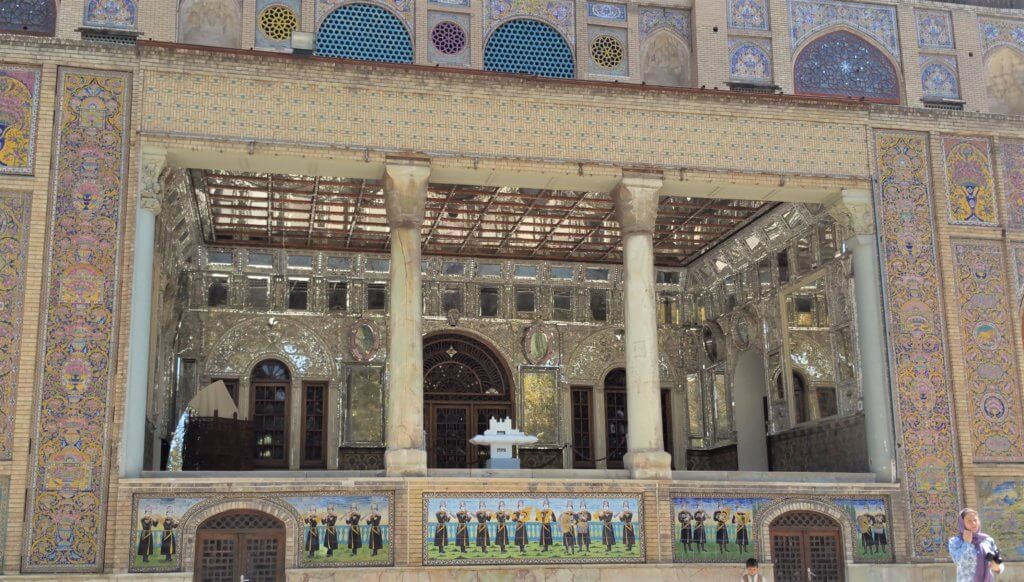
First up a quick briefing and our first meeting with our new travelling companions for the next 2 weeks. Four female Brits, tour manager, our wonderful local guide Leila, and later our skilled and very funny driver Majid.
First up a tour of key sites in Tehran and an introduction to the Tehran traffic. Mind boggling in terms of numbers, speed, and the apparent lack of rules for both drivers and pedestrians. From the outside it appeared to be complete chaos with motorbikes driving down the footpath, cars on the wrong side of the road, and meaningless pedestrian crossings. Yet it also seemed the drivers did not appear to get angry about other drivers – merely tooted the horn as if to say I am here and waited, or drove around the obstacle.
There is an amazing system where although there are formal taxis, any driver can pick up people and work out a fare-Uber style (without the rules). You can ask for the driver to be “closed door” (you only) or allow others to join you so you can share the fare. People simply stand by the side of the road and shout at the drivers and then work out a deal.
Along with the traffic you get used to the banners in Farsi apparently delivering religious and community messages. This was all the more evident as it was Ashura the festival commemorating the death and matyrdom of Imam Hussein, a grandson of the Prophet Mohammed. Frequently banners portray Ayatollah Khomeini and also the current Supreme Leader Ali Khamenei. Sometimes singly, sometimes together. The portrayal of the martyrs or victims of the Iraq-Iran war with their photos also featured on banners in every city and town along with sculptures in some city squares.
We arrived at our first site the UNESCO listed Golestan (rose garden) Palace along with the beauty of the palace we received our first introduction to the complexities of Iranian history. Learning the Persian dynasties came with visiting the many ancient sites around Iran – here the oldest palace in Tehran built first in the powerful Safavid dynasty (1500 to 1700s). Most of the current decoration particularly the mixing of European and Persian archictecture and decoration coming from the Qajar era (1700 to 1800s).
As with many places we were to visit the beauty, opulence and incredible architecture and decorative art throughout Golestan Palace was breathtaking. Brightly coloured painted tiles showing scenes from the 18th century including European style clothing not seen in Persia at that time. Mirrored entrance ways that stunned the visitor. The use of water and gardens to create a cooling oasis effect.
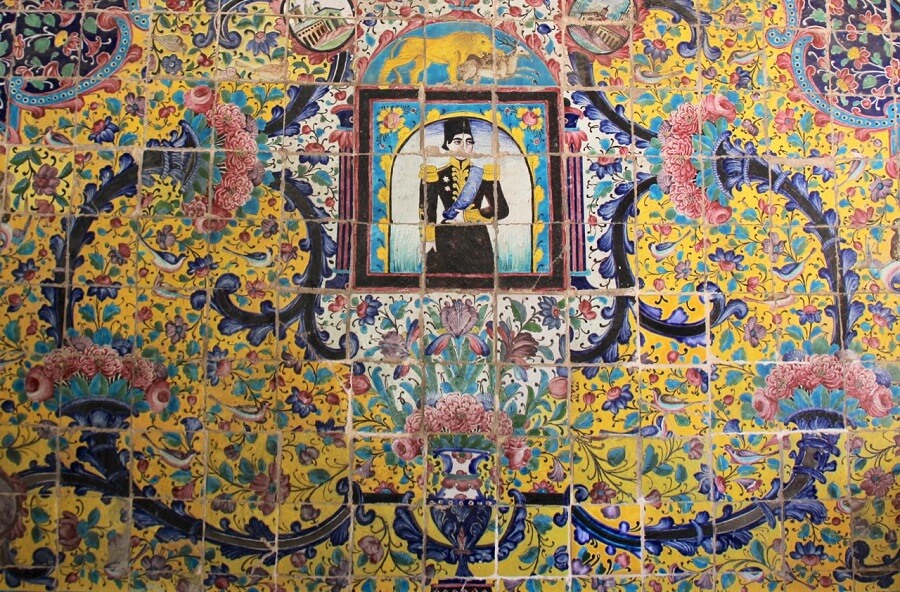
The rooms, which displayed the European influenced excesses of the ruling family. A theme which was to be built upon in the afternoon. Two famous thrones were housed here – one the Marble Throne a large throne comprised of many pieces of marble from Yazd in Iran.
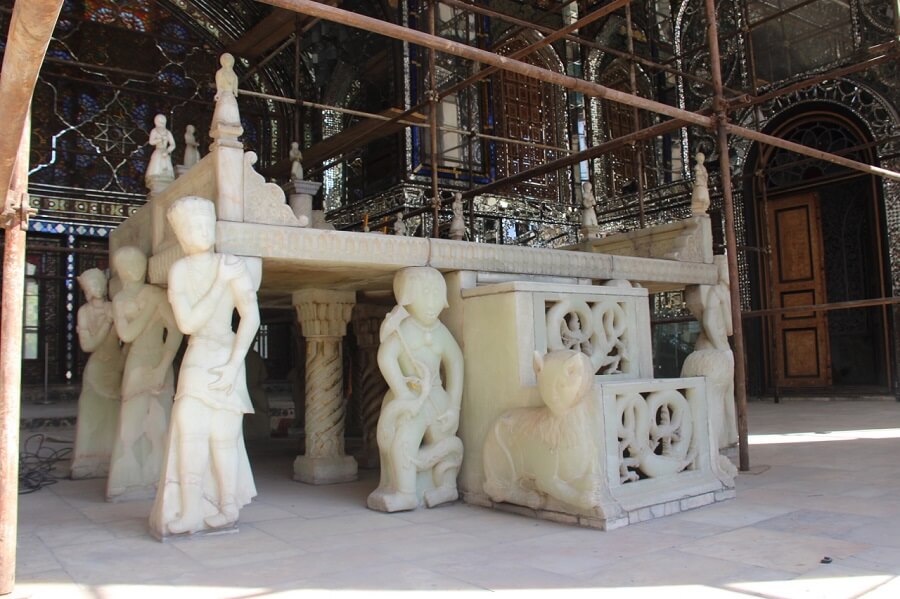
A replica of the Peacock Throne a masterpiece of excess was on display with the original to be seen later at the Treasury museum. “It is made of wood, covered with gold and encrusted with jewels. … 26,733 jewels covering the throne”
An oops at the end of our palace visit. While returning the card for the entrance fee into the secure box provided I posted the hotel room card instead! Many jokes about being able to get back into the palace but not into our room!
Next a visit to the Treasury of National Jewels held by the Central Bank of the Islamic Republic of Iran in Tehran. With significant security measures and short opening times we were advised to hurry lunch in order to be first in the queue to enter the vault – an excellent tip.
Through security we were led into a large vault containing the jewels of empires. Precious and semi-precious stones and items constructed from them, belonging to the various dynasties that have ruled Iran. The collection also contained what is believed to be the worlds largest cut pink diamond along with a story told that another even larger diamond was worn by the Shah’s brother to a fancy dress and never seen again!!

One cabinet was framed by what looked like a curtain trim and rope until closer inspection showed it was constructed of millions of tiny seed pearls. The opulence and excesses of crowns, cups, swords, jewellery, dining settings, raw stones and so much more was exhausting – so much opulence.
The comment by the guide was that it is not the most expensive collection in the world, it is the largest in one place.
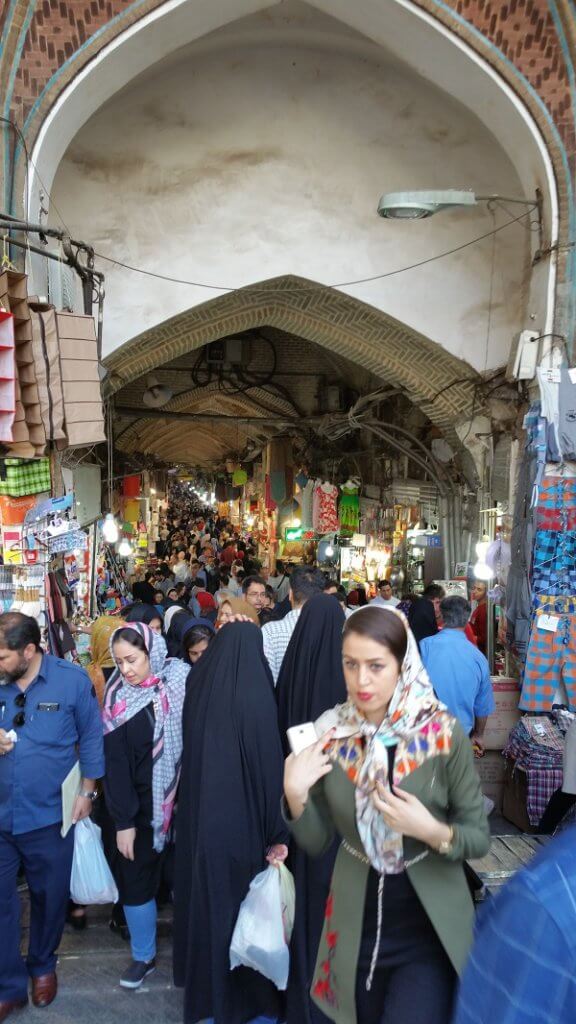
From opulence to everyday. A visit of complete contrast – the Grand Bazaar of Tehran teeming with people and everything you could want to buy. It is spread over 10 kms with multiple avenues, containing mosques, banks, tea houses and many entrances. A stop for tea in what we called the little tulip glasses – unfortunately we were often given thicker larger glass cups – we suspected it was the influence of the British and their cup of tea.
Leila lead us through the carpet bazaar; a special experience given her passion for and knowledge of carpet. Along with the willingness of the sellers to spend time and show there wares with no pressure to buy.
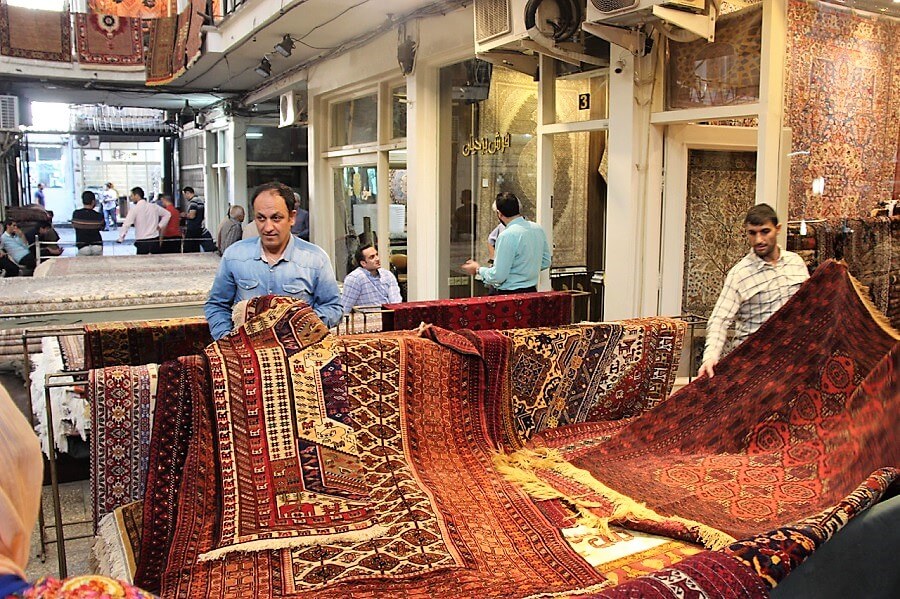
Finally to the old US Embassy to have a look at the graffiti on the walls. On the opposite side of the road the headquarters of the military with a painting of the flag of Israel on the footpath outside. Most of the group were quite fascinated I (Mel) was not so – it did not seem right or respectful from either side somehow.
